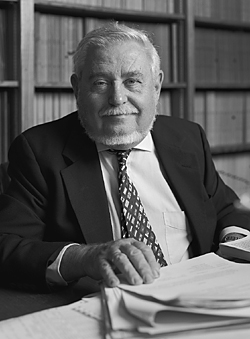In Commemoration of Boyd Professor Joseph Callaway
July 1, 1931 - June 17, 1994
Given the recent, untimely death of Joe Callaway, his contributions to and place in this department over the past twenty-five years deserve special notice.
In research, Joe Callaway was identified with two areas, one the calculation of band structures in solid state physics and, second, the detailed calculations of electron-hydrogen atom scattering in atomic physics.
He was one of the early pioneers to follow the work of Wigner, Seitz and Slater, and convert that work into elaborate numerical calculations of band structures. In recent years, magnetic materials such as nickel, small clusters, and high-temperature superconducting materials were his particular interest. Starting in the 1960's, the density functional method became a key component of this work. Besides adapting it for computational applications, he also contributed to its formalism, particularly in extensions to relativistic effects. The Hubbard model was another of his major attentions.
In the problem of electron-hydrogen scattering, he was known for some of the most detailed and accurate numerical computations of cross-sections in the intermediate energy range which is rich in resonances in this system. Kohn variational calculations and the use of pseudostates were particular characteristics of his work. In a long and fruitful collaboration with Jim Williams (Perth), who produced some of the best experimental data for low and intermediate energies, this work was extremely influential in the field.
During the course of these research activities, Joe trained and worked with a long string of graduate students and postdoctoral associates. During his years here, 29 students obtained their Ph.D. degrees under his supervision. His group was always one of the largest in this regard in the department's graduate education.
Besides these aspects of research and graduate education, Joe was also a major figure in many other ways in shaping this department. He served as Chairman from 1970 to 1973, years in which the department expanded significantly in the number of faculty. Many of the current senior faculty were hired in those years and the major role he played in that, as well as in setting the tone and emphasis on research, changed the complexion of this department. One could fairly conclude that Joe Callaway is the one person who shaped the department most in terms of what it is today.
As one who was always actively engaged and (loudly) heard in committees, departmental and university-wide, Joe's voice although now stilled, will continue to echo in this department.

